Server 2012 R2 End of Life: Implications and Next Steps

The impending end of life (EOL) for Windows Server 2012 R2 is a pivotal event for enterprises around the globe. As Microsoft concludes its support, understanding the ramifications and preparing for the transition becomes paramount. This comprehensive guide delves into the essence of Server 2012 R2's EOL, its impacts on businesses, and the critical timelines to consider for a seamless transition.
Understanding Server 2012 R2 EOL
The EOL phase for Windows Server 2012 R2 signals the cessation of regular patches, security updates, and technical support from Microsoft. This transition underscores the tech giant's push towards more modern, secure, and efficient computing solutions. However, it also necessitates businesses using this server operating system (OS) take decisive action to mitigate risks and ensure continuity in their operations.

Meaning and Implications of Server 2012 R2 End of Life
The EOL of Server 2012 R2 marks a significant juncture where Microsoft stops providing automatic fixes, updates, or online technical assistance. This doesn't mean the software will cease functioning overnight; rather, it signifies the end of direct support channels and updates from the manufacturer. For businesses, this transition has profound implications:
- Security Vulnerabilities: Without regular security patches and updates, systems running Server 2012 R2 will become increasingly susceptible to cyber threats and malware. Therefore using a robust Firewall will be necessary to keep your server safe and will act as a security barrier within the network that focuses on safeguarding the internal operations and data from potential threats that have bypassed external defenses or originate from within the network itself. We introduce the term "intra-wall" as a name for an internal firewall designed specifically to protect internal assets.
- Compliance Risks: Industries governed by regulatory standards may find themselves non-compliant if they continue to operate on an unsupported OS, potentially incurring fines and damaging their reputation.
- Operational Inefficiencies: The lack of updates can lead to performance degradation, impacting productivity and business operations.
- Increased IT Costs: Maintaining and securing outdated systems often requires additional resources and bespoke support solutions, leading to inflated IT expenses.
Impact of Server 2012 R2 End of Life on Businesses

The EOL of Server 2012 R2 poses several challenges for businesses, especially those heavily reliant on this OS for their day-to-day operations:
- Business Continuity Concerns: With no new security updates, businesses are at a heightened risk of experiencing downtime due to cyberattacks or system failures.
- Technology Obsolescence: The inability to leverage the latest technology advancements and features can put businesses at a competitive disadvantage.
- Strategic Planning Disruptions: Companies may need to accelerate their IT upgrade plans, impacting budgets and strategic initiatives.
Key Dates and Timeline for Server 2012 R2 End of Life
Microsoft has set specific milestones leading up to the EOL of Server 2012 R2, providing businesses with a timeline to plan their migration and upgrade strategies:
- End of Mainstream Support: This phase has already concluded for Server 2012 R2, ending in October 2018. During this phase, Microsoft provided regular updates and support.
- End of Extended Support: Scheduled for October 10, 2023, this milestone signifies the final cutoff for any form of support from Microsoft, including security patches and technical assistance.
What to Do When Your Windows Server 2012 & 2012 R2 Reaches End of Life?
As the server 2012 r2 end-of-life approaches, businesses face critical decisions on how to proceed to ensure their IT infrastructure remains secure, reliable, and compliant. This juncture is a pivotal moment for IT managers to reassess their server platforms and make strategic choices about upgrading, migrating, or transforming their IT environments. The cessation of support means no more security updates, technical assistance, or software patches from Microsoft, leaving systems vulnerable and potentially non-compliant with industry regulations.
Planning for Migration or Upgrade
Assessment: Begin with a thorough assessment of your current server environments. Identify applications and services running on Server 2012 and 2012 R2 and evaluate their importance and usage within your organization. At this stage you can also look into employing a Managed Service Provider to assess your need for current and future demands and how to migrate safely.
Options Exploration: Explore available options, including upgrading to a newer version of Windows Server, such as 2019 or 2022, migrating to a cloud-based solution like Microsoft Azure, or considering alternative platforms like Linux.
Budgeting: Allocate the budget for the migration or upgrade process, considering licensing costs, potential hardware upgrades, and any consulting or external support services needed.
Timeline Development: Develop a realistic timeline for the migration or upgrade, ensuring minimal disruption to business operations.
Leveraging Expertise and Tools
Consultation: Consult with Microsoft partners or IT consultancy firms specializing in server migrations and upgrades. These experts can provide insights, best practices, and support to streamline the transition.
Microsoft Tools: Utilize tools provided by Microsoft, such as the Microsoft Assessment and Planning Toolkit (MAPT) and Azure Migrate, to assist in evaluating and executing your migration or upgrade strategy.
Risks of Using Server 2012 r2 end of life
Continuing to operate Windows Server 2012 and 2012 R2 post-EOL presents numerous risks and challenges for businesses. Understanding these risks is crucial for stakeholders to make informed decisions regarding their IT infrastructure.
Security Vulnerabilities and Risks
The discontinuation of security updates for server 2012 r2 end-of-life exposes businesses to a higher risk of cyber threats and Security Breaches.
Without access to patches for newly discovered vulnerabilities, these systems become prime targets for hackers. The potential for zero-day exploits increases significantly, as any vulnerabilities discovered after EOL will not be addressed, leaving systems perpetually exposed. This exposure can lead to severe data breaches, where sensitive company or customer information could be stolen, resulting in financial loss, legal repercussions, and damage to the organization's reputation.
Lack of Technical Support
The absence of technical support from Microsoft for server 2012 r2 end-of-life means businesses are on their own to troubleshoot and resolve any issues that arise. This can significantly impact operational efficiency, as IT staff may need to spend more time and resources on problem-solving or may be unable to resolve complex issues without vendor support. The lack of expert assistance can lead to longer downtimes, affecting business operations and customer service delivery.
Limited Compatibility
As the technology ecosystem evolves, new software and applications are designed to leverage the capabilities of more recent operating systems. Developers will phase out support for older versions like server 2012 r2 end of life, leading to compatibility issues. Businesses may be unable to use the latest software, which could offer critical new features or efficiency improvements. This limitation can hinder innovation, reduce competitiveness, and complicate integration efforts with partners or vendors who have updated their systems.
Decreased Performance and Reliability
Operating systems are optimized for the current hardware and software landscapes. As server 2012 r2 end-of-life approaches, it becomes outdated. They may not perform optimally with newer hardware or efficiently run modern software solutions. This misalignment can result in slower system responses, increased downtime, and more frequent crashes or performance issues, directly impacting productivity and the bottom line.
Inability to Scale
Growth and scalability are essential for any business. Relying on EOL server operating systems constrains the organization's ability to scale its IT infrastructure effectively to meet increased demand or support new initiatives. This limitation can prevent businesses from responding agilely to market opportunities or customer needs, potentially stunting growth and innovation.
Loss of Vendor and Third-Party Support
Third-party vendors often align their support lifecycles with those of the underlying operating systems. Once server 2012 r2 end of life approaches, software providers and hardware manufacturers may discontinue support for products running on these platforms. This loss can complicate maintenance, reduce system functionality, and leave businesses without critical software or hardware support, impacting operations and security.

Higher Maintenance Costs
Maintaining and securing outdated server systems often require additional resources, including custom support contracts, which can be prohibitively expensive. Businesses may also need to invest in supplementary security tools or services to mitigate the increased risk exposure, diverting financial resources from strategic initiatives to maintaining obsolete technology.
Targeted Attacks and Increased Risk of Exposure
Attackers frequently target systems known to be vulnerable, making server 2012 r2 end of life attractive targets. The knowledge that these systems will not receive updates makes them susceptible to targeted attacks designed to exploit unpatched vulnerabilities, increasing the organization's risk of cyber incidents and data exposure.
Compliance Implications for Organizations
Regulatory compliance standards, such as GDPR, HIPAA, or PCI-DSS, require businesses to maintain a secure IT environment. Operating on unsupported software like Windows Server 2012 and 2012 R2 can result in non-compliance, leading to significant legal and financial penalties, not to mention the potential loss of customer trust and business credibility.
Upgrade Options and Alternatives
Upgrading from Windows Server 2012 & 2012 R2 is a critical step for businesses to maintain security, enhance performance, and ensure compatibility with new technologies. This section explores the benefits of upgrading, available paths, and alternatives to consider for a smooth transition away from server 2012 r2 end of life.
Benefits of Upgrading to a Newer Server Release
Upgrading to a newer server release offers many benefits, including improved security features, enhanced performance, and access to the latest innovations in server technology. Businesses can use new functionalities that increase efficiency, streamline operations, and support evolving business needs. Additionally, upgrading ensures ongoing support from the vendor, including regular security updates and technical support, which is crucial for maintaining a secure and reliable IT environment.
Available Upgrade Paths for Server 2012 R2
Microsoft provides several upgrade paths for organizations looking to move from server 2012 r2 end of life. These paths are designed to minimize disruptions and ensure a seamless transition. Businesses can choose to directly upgrade to a newer version of Windows Server, such as 2016 or 2019, depending on their specific requirements and compatibility needs. It's essential to review the specific hardware and software requirements for each version to ensure compatibility and plan for any necessary infrastructure adjustments.
Windows Server 2016
Migrating to Windows Server 2016 from Windows Server 2012 R2 is an available option. Windows Server 2016, while not the latest version available, offers several enhancements over its predecessor, 2012 R2, including improved security features, more advanced virtualization capabilities, and better storage solutions.
However, it's important to note that Server 2016 is also not the newest version, and as such, it's more than two versions behind the current Windows Server release. Even though updates are issued, the essential support mechanisms necessary to address critical errors - such as blue screens, security breaches, and other significant issues - are not effectively operational. Therefore, migrating to a newer version, such as 2019 or 2022, maybe more beneficial in the long term to ensure robust support and system stability.
Windows Server 2019
Windows Server 2019 is a popular choice for businesses upgrading from server 2012 r2 end of life. It offers advanced security features, including Shielded Virtual Machines and Windows Defender Advanced Threat Protection, providing a robust defense against modern security threats. Additionally, Server 2019 introduces enhancements in hybrid cloud capabilities, enabling easier integration with cloud services like Azure for improved flexibility and scalability.
Windows Server 2022
Windows Server 2022 further advances the server operating system with cutting-edge security, hybrid cloud integration, and hyper-converged infrastructure capabilities. It introduces significant improvements in security, such as secured-core servers and Azure Arc integration, making it an attractive option for businesses prioritizing security and cloud readiness. Upgrading to Server 2022 offers a forward-looking infrastructure that supports the latest computing technologies, including containerization and microservices.
Linux-Based Servers
For organizations considering an alternative to Windows Server, Linux-based servers offer a viable option. Linux servers are known for their stability, security, and flexibility. They can be a cost-effective solution, with several distributions available at no cost. Linux servers also provide extensive customization options, making them suitable for various applications and workloads. However, transitioning to Linux requires careful consideration of compatibility with existing applications and potential learning curves for IT staff.
Cloud Services
Migrating server workloads to cloud services is an increasingly popular option for businesses looking to modernize their IT infrastructure. Cloud services, such as Microsoft Azure, Amazon Web Services (AWS), and Google Cloud Platform (GCP), offer scalability, reliability, and enhanced security features. Moving to the cloud can reduce the need for physical hardware maintenance and upfront capital expenses while also providing the flexibility to scale resources according to demand. Cloud migrations require careful planning, especially regarding data migration, security, and compliance considerations.
Migration Strategies for Server 2012 R2 End of Life
As the server 2012 r2 end of life approaches, businesses must consider their options for migration to ensure continued security, support, and functionality. This section outlines strategic approaches for migrating from server 2012 r2 end of life, including upgrading to a newer server version, moving to cloud services, and implementing hybrid solutions.

Upgrading to a Newer Server Version
Upgrading directly to a newer version of Windows Server is a straightforward migration strategy for businesses looking to maintain an on-premises infrastructure while gaining the benefits of the latest server technologies. This approach allows organizations to leverage improved security features, performance enhancements, and extended support timelines. Critical considerations for a successful upgrade include:
- Compatibility Assessment: Evaluate hardware and software compatibility with the new server version to identify any potential issues that could arise during the migration process.
- Planning and Testing: Develop a detailed migration plan that includes a phased rollout and testing strategy to minimize disruptions to business operations.
- Backup and Recovery: Ensure comprehensive data backups are in place to prevent data loss during the migration. Implementing a robust recovery plan is crucial for addressing any unexpected challenges.
Migrating to the Cloud: Benefits and Considerations
Cloud migration represents a significant shift in how businesses manage their IT resources, offering scalability, flexibility, and cost savings. By migrating server workloads to the cloud, organizations can benefit from:
- Reduced Infrastructure Costs: Cloud services reduce the need for physical hardware and associated maintenance costs.
- Scalability: Easily scale resources up or down based on demand, paying only for what you use.
- Enhanced Security: Cloud providers offer advanced security measures that may surpass what businesses can implement on-premises.
However, cloud migration also requires careful planning and consideration of:
- Data Security and Privacy: Understand the security and compliance measures of your cloud provider to ensure they meet your business's requirements.
- Application Compatibility: Assess whether existing applications can run in the cloud or if modifications are necessary.
- Migration Strategy: Develop a detailed migration plan, including a phased approach and testing to ensure a smooth transition.
Hybrid Solutions: Combining On-premises and Cloud Environments
Hybrid solutions offer the best of both worlds, allowing businesses to maintain sensitive workloads on-premises while leveraging the cloud for scalability, disaster recovery, and additional services. This approach provides flexibility and control over IT resources, enabling organizations to:
- Optimize Infrastructure Costs: Strategically use cloud resources for variable workloads while keeping stable workloads on-premises.
- Enhance Business Continuity: Utilize the cloud for backup and disaster recovery solutions, improving resilience against data loss and downtime.
- Facilitate Innovation: Quickly deploy and test new applications in the cloud without significant upfront investment in on-premises infrastructure.
Implementing a hybrid solution requires a comprehensive understanding of your IT landscape, including network architecture, security requirements, and application dependencies. Key considerations include:
- Integration and Management: Ensure seamless integration between on-premises and cloud environments and implement management tools for visibility and control across both.
- Data and Application Strategy: Determine which data and applications are best suited for the cloud versus on-premises based on performance, security, and compliance requirements.
- Network Connectivity: Establish reliable and secure connectivity between on-premises and cloud environments to support seamless operations and user experience.
Planning and Executing a Successful Server Upgrade
Upgrading your server infrastructure is a critical process that requires meticulous planning and execution to ensure minimal disruption to business operations. Whether transitioning from server 2012 r2 end of life to a more recent version, adopting cloud services, or integrating a hybrid solution, the following strategies will help plan and execute a successful server upgrade.
Backup All Your Data and Create a Recovery Plan
The first and most crucial step in any upgrade or migration process is to ensure that all your data is backed up securely. Data loss can have devastating effects on a business, making it imperative to:
- Perform Comprehensive Backups: Include all critical data, applications, and system configurations. Utilize both onsite and offsite backup solutions for redundancy.
- Verify Backup Integrity: Regularly test your backups to ensure data can be restored accurately and within acceptable recovery time objectives.
- Develop a Recovery Plan: Outline detailed procedures for data recovery in the event of data loss, including roles, responsibilities, and step-by-step recovery processes.
Conducting a Comprehensive IT Audit
Before upgrading, conduct a thorough audit of your current IT infrastructure to identify the project's scope. This audit should:
- Assess Hardware and Software Inventory: Determine if existing hardware is compatible with the new server software requirements and identify any software needing updates or replacements.
- Evaluate System Dependencies: Understand how different components of your IT system interact and depend on each other, which is crucial for planning the migration without disrupting business processes.
- Identify Potential Challenges: Pinpoint any potential issues that could arise during the upgrade, including compatibility problems, performance bottlenecks, or security vulnerabilities.
Plan for Downtime
Even with the best planning, upgrading server infrastructure can lead to downtime. To minimize the impact on business operations:
- Schedule Downtime Strategically: Choose a time when the use of IT resources is at its lowest, such as after hours or during weekends.
- Communicate with Stakeholders: Inform all relevant parties well in advance about the planned downtime, including employees, customers, and partners.
- Optimize the Upgrade Process: Test the upgrade process in a staging environment to identify ways to reduce downtime.
Create Contingency Plan
Despite thorough planning, unexpected issues can arise during an upgrade. A contingency plan ensures you're prepared to address problems efficiently:
- Outline Response Strategies: Define actions to take in case of critical failures, such as rolling back to a previous state or activating standby systems.
- Assign Roles and Responsibilities: Ensure team members know their tasks during an emergency, facilitating quick and organized responses to any issues.
- Regularly Review and Update the Plan: As your IT environment evolves, so should your contingency plan. Regular reviews help keep it relevant and effective.

Ensuring Data Integrity and Security During Migration
Maintaining the integrity and security of your data during the upgrade is paramount. Implement stringent security measures:
- Use Encryption: Encrypt data during transfer to protect it from interception.
- Maintain Security Controls: Ensure all security controls are in place and functioning in the new environment before migrating sensitive data.
- Monitor for anomalies: Keep a close watch on system activity during and after the migration to detect and respond promptly to any unusual behavior.
Training and Support for IT Staff and Users
A successful upgrade requires that both IT staff and end-users are adequately prepared for the new system:
- Provide Training: Offer comprehensive training sessions for IT staff on the new technologies and for end-users on any changes that may affect their workflows.
- Establish Support Channels: Ensure users can access support resources to address any issues or questions that arise post-upgrade.
Impact on Microsoft Products and Services
The Server 2012 r2 end of life has significant ramifications not just for the server operating system itself but also for a range of Microsoft products and services that integrate with or run on the server. Understanding these impacts is crucial for businesses planning their migration or upgrade strategies.
Compatibility with Microsoft Azure
The EOL of server 2012 r2 end of life directly affects how these systems interact with Microsoft Azure, particularly concerning:
- Azure Integration and Support: Older server versions may face limitations or lack support for newer Azure services, impacting cloud-based operations and innovation.
- Azure Hybrid Benefit: Organizations upgrading to newer versions can leverage the Azure Hybrid Benefit for cost savings on Azure services, providing a smoother transition and integration with cloud infrastructures.
Integration with Microsoft Windows and Other Server OS Versions
The compatibility between Server 2012 R2 and newer versions of Windows Server or other Microsoft server operating systems is an essential consideration:
- Direct Upgrades: Microsoft typically supports direct upgrades from one or two versions back, but there may be limitations or additional steps required when moving from server 2012 r2 end of life.
- Cross-Platform Services: Services that span across multiple server versions, such as Active Directory or file sharing, need careful planning to ensure seamless operation during and after the upgrade process.
Software Assurance (SA) Implications for Server 2012 R2
Software Assurance (SA) provides several benefits that can affect the migration strategy for Server 2012 R2, including:
- Access to New Versions: SA holders may have the right to upgrade to the latest versions of Windows Server without additional licensing costs, facilitating a cost-effective migration.
- Training and Support Benefits: SA benefits include training vouchers and support incidents that can be utilized to prepare IT staff for the migration and address any issues that arise during the process.
It is important to note here that While Software Assurance (SA) benefits are significant and relevant, we should not focus solely on SA when considering licensing for the migration. Licensing encompasses a broader range of considerations beyond the specific benefits offered by SA, such as compliance with licensing terms, understanding the full spectrum of licensing options available for Windows Server, and evaluating the costs and requirements associated with these options.
Moreover, it's not only the 2012 r2 version that needs upgrading but also the 2016 version, as it is more than two versions behind the current one. Despite being 'supported', according to current Microsoft support policy, sticking with these outdated versions has led to several issues during critical times for customers. While patches continue to be released, critical support functions necessary for recovery from serious errors like blue screens, security issues, and other problems are practically not available.
Impact on SQL Server and Other Microsoft Products
The server 2012 r2 end of life also influences other Microsoft products running on these servers, notably SQL Server, with implications for:
- Compatibility and Support: Newer versions of SQL Server and other applications may not be supported on Server 2012 R2, necessitating upgrades to maintain support and functionality.
- Performance Improvements: Upgrading server operating systems and associated products like SQL Server can yield performance improvements, enhanced security, and access to new features that improve operational efficiency.
Future Considerations
As businesses move beyond the immediate challenges posed by the server 2012 r2 end of life, several forward-looking strategies become crucial for aligning IT infrastructure with future trends and operational requirements. These considerations are essential for ensuring long-term resilience, security, and competitiveness in an ever-evolving technological landscape.
Exploring a Hybrid Cloud Solution
Hybrid cloud solutions represent a strategic blend of on-premises and cloud-based resources, offering a versatile framework for businesses to balance control, security, and scalability. This model allows for the localized management of sensitive data and applications while simultaneously capitalizing on the cloud's scalability for fluctuating workloads and innovation. Implementing a hybrid cloud can facilitate agile responses to business needs, optimize costs through efficient resource utilization, and bolster disaster recovery strategies. RedZone Technologies provides valuable insights into virtual security operations and cloud solutions, helping businesses evaluate and transition to hybrid environments effectively.
Planning for Future End-of-Life Scenarios
Anticipating and preparing for the EOL of technological assets is vital for maintaining uninterrupted business operations. Proactive planning involves staying informed of the life cycles for current technologies, understanding the potential impacts of EOL on security and compliance, and outlining a clear roadmap for future technology transitions. By doing so, businesses can avoid the pitfalls of rapid obsolescence, mitigate risks associated with unsupported software or hardware, and ensure a smooth upgrade or migration process when the time comes.
Importance of Staying Updated with Microsoft's Product Roadmap
Staying informed about Microsoft's product roadmap is crucial for strategic IT planning. This knowledge enables businesses to foresee upcoming changes, prepare for necessary system upgrades, and seize opportunities presented by new technologies. Aligning IT infrastructure planning with Microsoft's roadmap ensures businesses can leverage the latest innovations, maintain optimal security standards, and align IT capabilities with long-term business objectives. This strategic awareness is instrumental in navigating the technological landscape and sustaining competitive advantage.
How can RedZone Technologies Help?
RedZone Technologies specializes in navigating the complexities of upgrading IT infrastructure, conducting security assessments, and facilitating cloud migrations. Our professional services and managed service provider solutions provide businesses with the expertise and support necessary for smooth and secure transitions. With a focus on crafting tailored solutions that address specific business needs, RedZone Technologies empowers organizations to adapt to technological advancements confidently and efficiently. To explore how RedZone can enhance your IT infrastructure and security posture, we invite you to visit our contact page.

Conclusion
The Server 2012 r2 end of life presents both challenges and opportunities for businesses. By understanding the impact on Microsoft products and services, exploring future considerations, and leveraging resources and expertise from RedZone Technologies, businesses can ensure their IT infrastructure remains secure, efficient, and aligned with their strategic objectives. Planning for upgrades, considering hybrid cloud solutions, and staying informed about product roadmaps are essential steps in navigating the evolving IT landscape. For more information and support, visit RedZone Technologies, your partner in secure and efficient IT infrastructure upgrades and management.
FAQs
Is Windows Server Upgrade Free?
Upgrading to a newer version of Windows Server is not typically free. Microsoft licenses Windows Server under various models, including per-core licensing and Client Access Licenses (CALs) for users or devices. The cost of upgrading depends on the licensing model, the edition of Windows Server you're moving to, and whether you have Software Assurance or other licensing agreements that might cover upgrades. Businesses should assess their licensing needs and consult with Microsoft or a licensed vendor to understand the costs involved in upgrading.
Minimum Requirements for Upgrade of Server 2012 R2 End of life to 2019
Upgrading from Server 2012 r2 end of life to Windows Server 2019 requires meeting specific hardware and software minimum requirements to ensure compatibility and performance. These typically include:
- Processor: 1.4 GHz 64-bit processor compatible with the x64 instruction set.
- RAM: Minimum of 512 MB for Core installations or 2 GB for Desktop Experience installations.
- Storage Space: Minimum of 32 GB.
- Network: Gigabit (10/100/1000baseT) Ethernet adapter.
- Graphics and Input Device: For Desktop Experience installation, a graphics device and monitor capable of Super VGA (1024 x 768) or higher resolution and a keyboard and mouse or some other compatible pointing device are needed.
Businesses should also consider additional requirements based on their specific workloads and the roles that the server will be performing. It's essential to review the compatibility of existing applications and services with Windows Server 2019 before upgrading.
Keeping 2012 R2 Around Past EOL
Using server 2012 r2 end of life (EOL) is possible but comes with significant risks, as detailed in the sections above. If absolutely necessary, businesses should take steps to mitigate these risks, such as:
- Isolating the server: Keep it disconnected from the internet and limit its network access to minimize exposure to threats.
- Implementing additional security measures: Use robust firewalls, intrusion detection systems, and antivirus software.
- Monitoring closely: Regularly check the system for signs of unauthorized access or other security issues.
Long-term, however, planning for an upgrade or migration to supported software is strongly recommended to ensure security, compliance, and access to the latest features and improvements.
Are Windows Server Licenses Perpetual?
Windows Server licenses purchased outright, such as through the Open License Program, are typically perpetual, meaning they do not expire. However, access to updates, including security updates, is limited to the product's support lifecycle. Once a product reaches its EOL, it will no longer receive updates or support from Microsoft.
For ongoing access to the latest features, security updates, and support, businesses might consider subscription options like Microsoft Azure or Software Assurance, which require ongoing payments but ensure continuous access to the latest versions and support services.
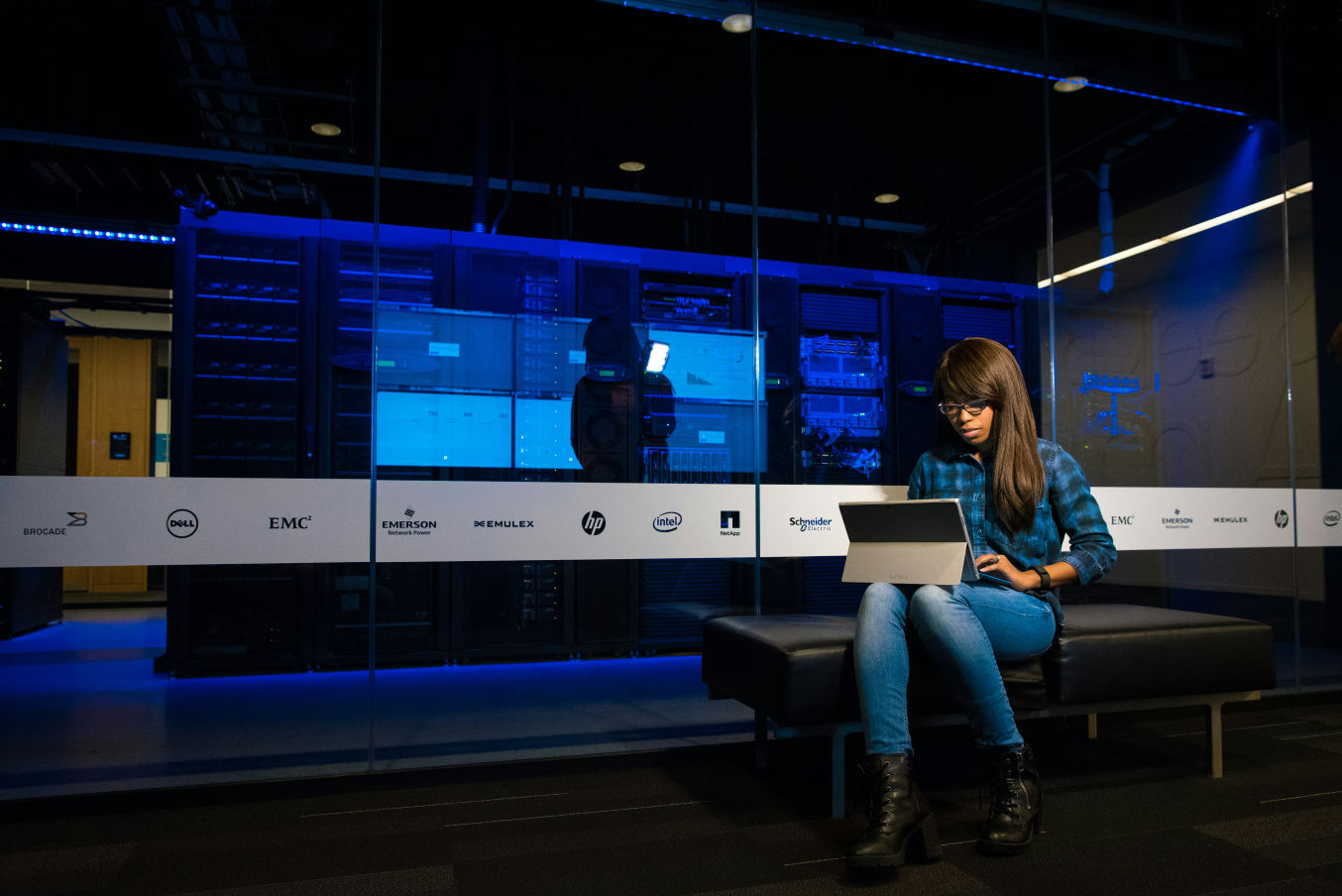 Security Updates
Security UpdatesUnderstanding IT Compliance: Scope, Benefits, and Challenges
Discover what IT compliance is, its importance, benefits, risks of non-compliance, frameworks, and how to achieve robust IT compliance in your organization.
 Security Updates
Security UpdatesImplement Secure Browsing with Powerful SSL Decryption
Explore the essentials of SSL decryption, its importance, challenges, and best practices for enhancing security and compliance for business in a detailed guide
 Security Updates
Security UpdatesTransitioning from Proxy Firewalls to Endpoint Security
Explore the evolution from proxy firewalls to endpoint security, enhanced threat detection, data encryption, and comprehensive protection for modern networks.
 Security Updates
Security UpdatesExpert IT Risk Assessment: Protect Your Business Today!
Mitigate potential IT threats with our comprehensive risk assessment guide, ensuring your digital infrastructure. Ensure your business is secure an...
 Security Updates
Security UpdatesEssential Guide to Best Practices in Compliance Security
Explore essential strategies for compliance security in this comprehensive guide. Learn about safeguarding your business and meeting regulatory sta...
 Security Updates
Security UpdatesSecure Your Data with Expert Cloud Database Solutions
Learn efficient solutions and secure your cloud databases with encryption and compliance features, ensuring data safety and privacy across all plat...
 Security Updates
Security UpdatesA Guide to Cloud Network Technology: Benefits and Types
Unlock the potential of cloud network technology for seamless connectivity. Learn and scale solutions that drive business innovation and growth via...
 Security Updates
Security UpdatesAffordable Managed IT Services for Small Businesses
Explore top-managed IT services for small businesses to boost efficiency and security. Get expert insights and practical tips to optimize your IT o...
 Security Updates
Security UpdatesSecure Your Network with Gateway Security Solutions
Explore the essentials of gateway security: learn about its importance for network protection and best practices to safeguard your digital assets e...
 Security Updates
Security UpdatesDisaster Recovery Testing: Ensure Business Continuity
Explore effective disaster recovery testing strategies in this guide to maintain business continuity, prevent data loss, and minimize downtime duri...
 Security Updates
Security UpdatesMaximizing Security: Vulnerability Management Lifecycle
Explore the complete guide to the Vulnerability Management Lifecycle to boost your cyber resilience and secure your business IT infrastructure effe...
 Security Updates
Security UpdatesYour Network with Endpoint Security Management
Explore our comprehensive guide on Endpoint Security Management to understand its importance, how it works, and best practices for robust network s...
 Security Updates
Security UpdatesEnsuring Security Compliance: Tips, Insights & Strategies
Discover the essentials of security compliance, its importance, frameworks, and tools. Learn how to protect data and meet regulatory standards effe...
 Security Updates
Security UpdatesBoost Your Security with Internal Penetration Testing
Dive into internal penetration testing with our in-depth guide. Learn the essentials, techniques, and best practices to fortify your cybersecurity ...
 Security Updates
Security UpdatesEgress vs Ingress: A Guide to Data Traffic Management
Understand Egress vs Ingress in data management. Learn and explore their roles, traffic analysis, risks, and best practices for network and cloud s...
 Security Updates
Security UpdatesPrevent Credential Harvesting to Protect Your Precious Data
Understand credential harvesting. Learn how it works, common techniques, its impact, and strategies to prevent and mitigate attacks to secure your ...
 Security Updates
Security UpdatesSecure Your Big Data: Top Solutions for Data Security
Protect your valuable data with our robust big data security solutions. Learn about the threats and Safeguard against cyber threats and ensure comp...
 Security Updates
Security UpdatesSecure Your Network with Advanced Management Solutions
Explore the details of comprehensive network security management: Learn key strategies, best practices, and tools to safeguard your digital environ...
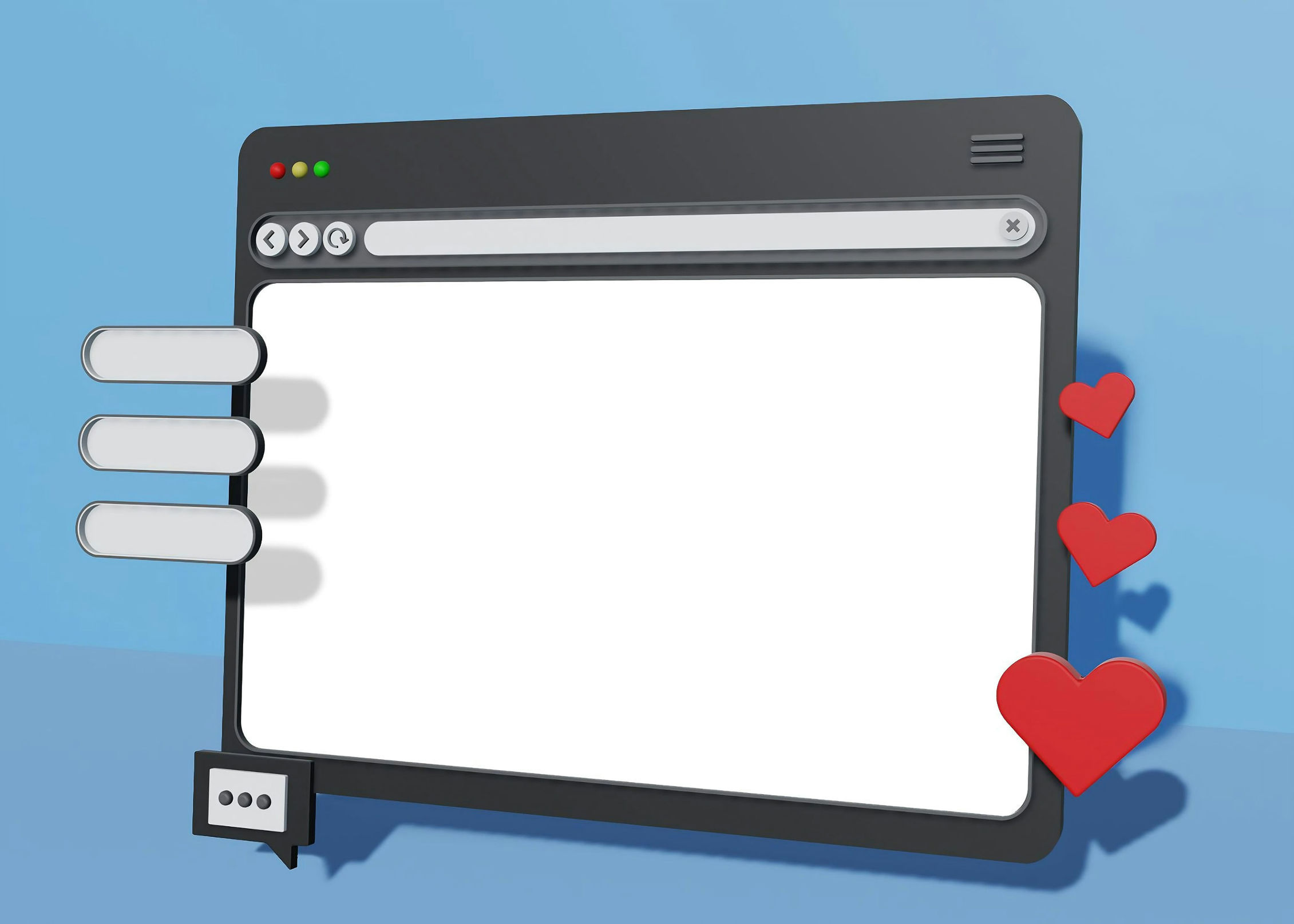 Security Updates
Security UpdatesGuide to On-Path Attacks: Protecting Your Cybersecurity
Learn about on-path attacks in this comprehensive guide, exploring definitions, types, consequences, and key prevention strategies to safeguard you...
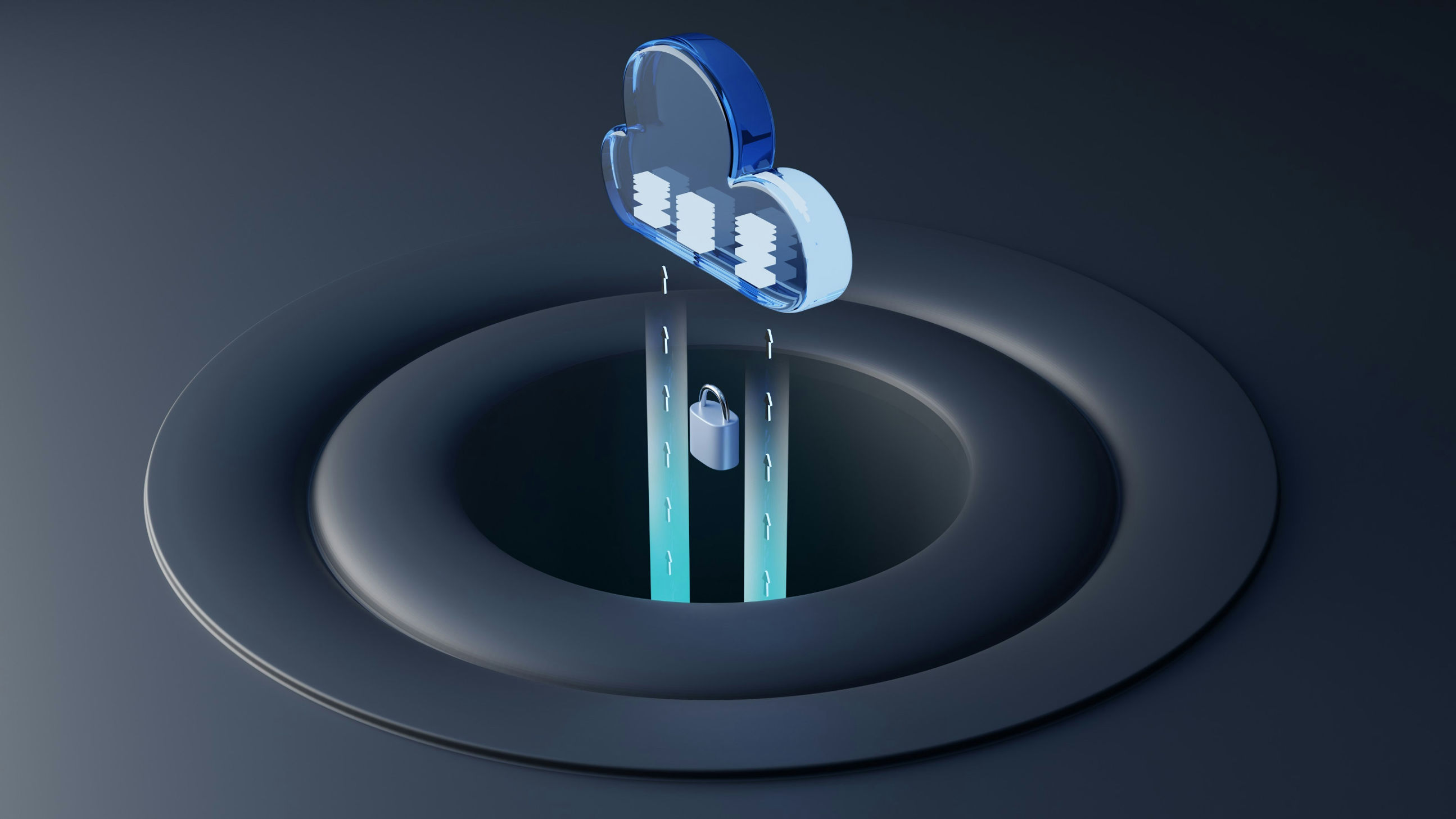 Security Updates
Security UpdatesExploring Managed Cloud Services: A Comprehensive Guide
Dive into the Managed Cloud Services with our in-depth guide. Explore benefits, types, and best practices to enhance your business's cloud strategy...
 Security Updates
Security UpdatesComprehensive Guide to Ubiquitous Computing: Impact & Future
Explore the details of ubiquitous computing, from its core concepts and layers to its societal impact, key technologies, applications, and future p...
 Security Updates
Security UpdatesClone Phishing Explained: Detection and Prevention Guide
Discover how clone phishing works and its impact. Learn effective strategies to identify, prevent, and respond to these sophisticated email threats...
 Security Updates
Security UpdatesHow to Secure Your Business with Cyber Security Insurance
Explore the essentials of Cyber Security Insurance, covering its importance, types of coverage, benefits, and considerations for businesses in the ...
 Security Updates
Security UpdatesEfficient Data Spooling Solutions For Streamlined Operation
Learn How To Efficiently Manage And Store Your Data With Our Reliable Data Spooling Services. Keep Your Information Organized And Accessible With T...
 Security Updates
Security UpdatesMaximizing Compliance & Risk Management: Expert Strategies
Learn how to ensure business success with effective compliance and risk management strategies. Explore definitions, differences, frameworks, and ch...
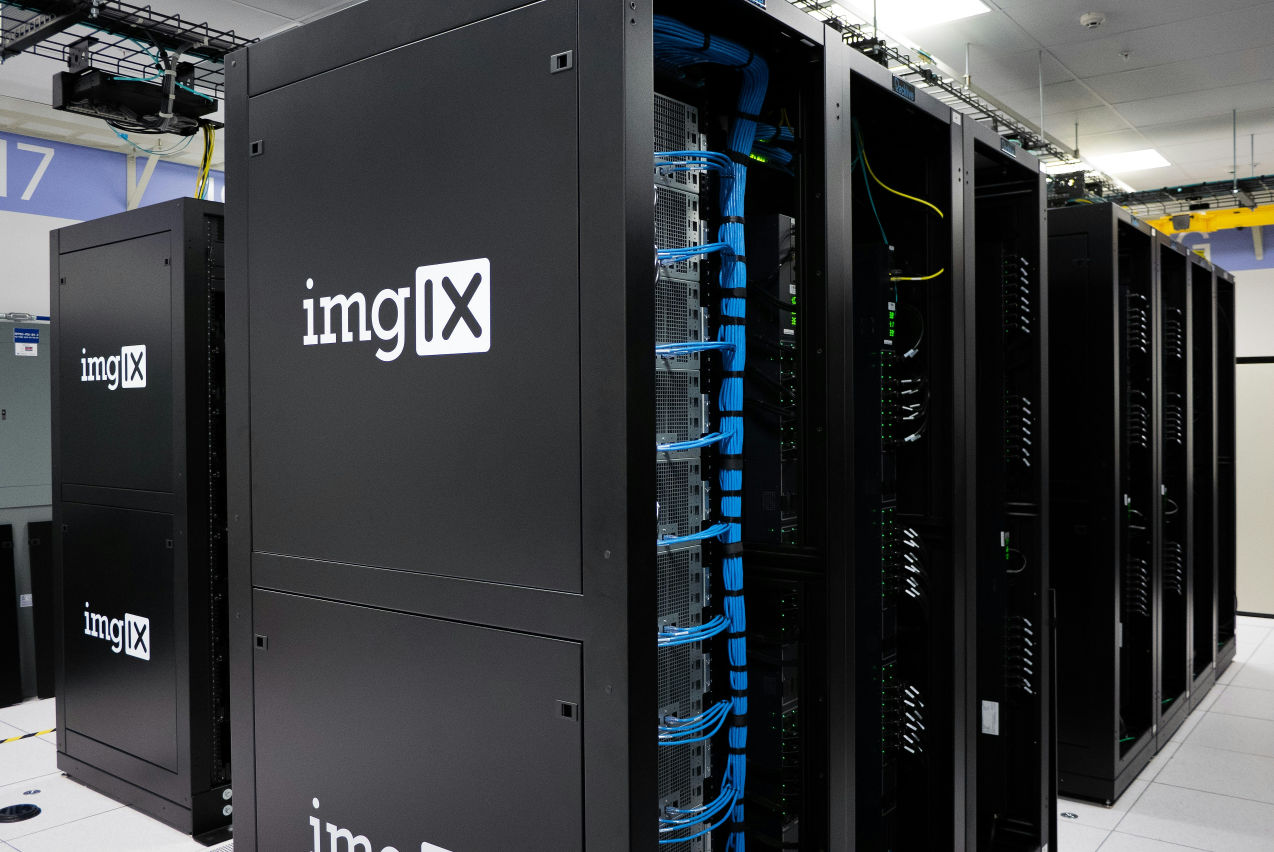 Security Updates
Security UpdatesUnderstanding MDF vs IDF: Key Differences & Benefits
Explore the crucial differences and examples between MDF and IDF in networking, understanding their roles, functions, and impact on network infrast...
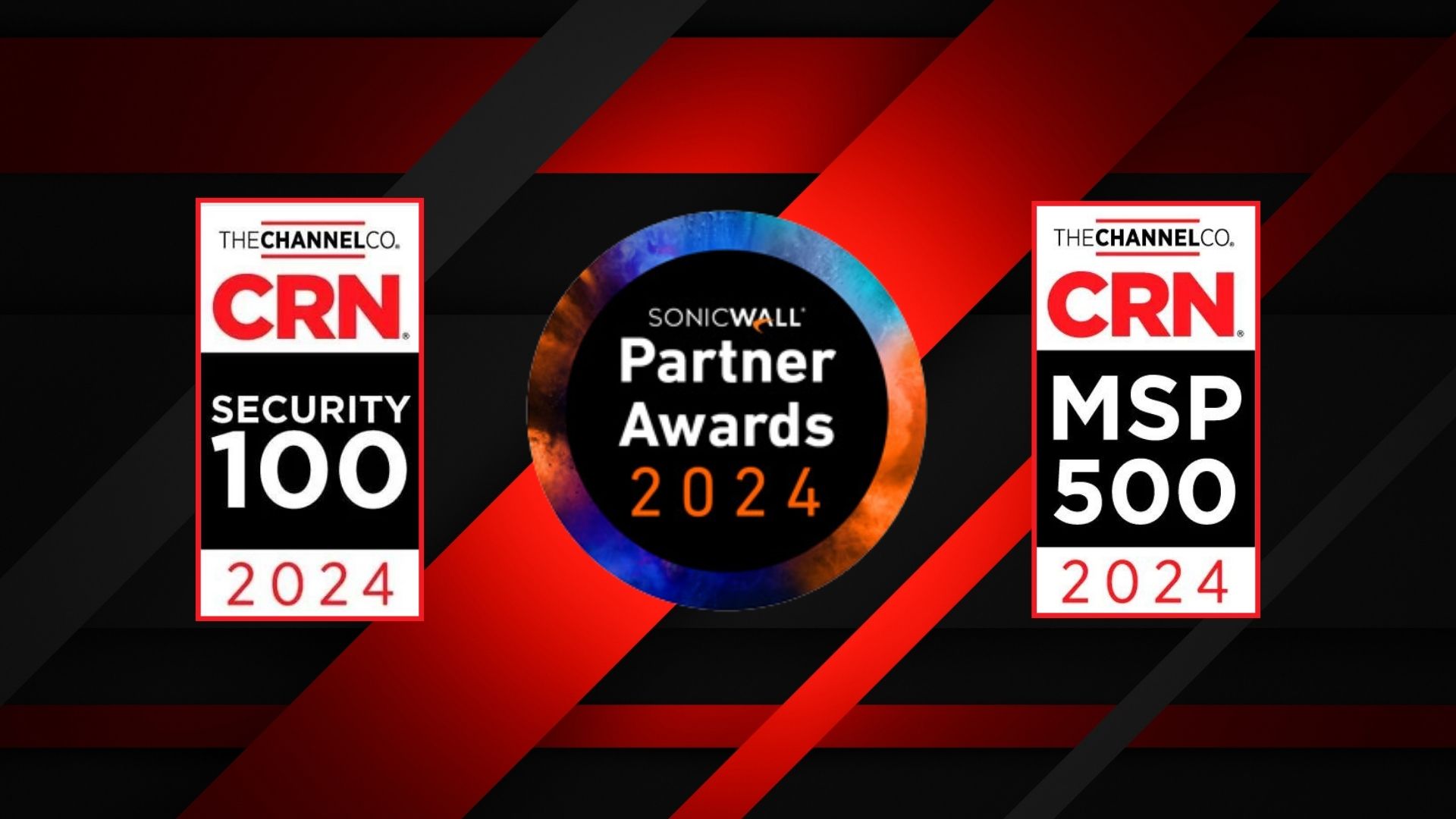 Security Updates
Security UpdatesRedZone Wins CRN's Top Security 100 & MSP 500 Awards 2024
RedZone Technologies earns CRN's Security 100 & MSP 500 Awards, affirming its leadership and innovative approach in the cybersecurity and IT manage...
 Security Updates
Security UpdatesJames Crifasi Speaks on Cybersecurity at Tech Conference
Join James Crifasi, CTO & COO of RedZone Technologies, at the Tech Conference as he explores cybersecurity's role in driving business growth and ad...
 Security Updates
Security UpdatesRedZone's James Crifasi Wins SonicWall's Technical Hero Award
CTO James Crifasi of RedZone Technologies earns SonicWall's Technical Hero of the Year, exemplifying unparalleled dedication to cybersecurity and I...
 Security Updates
Security UpdatesHow to Encrypt Email in Outlook
Learn how to encrypt email in Outlook with our step-by-step guide. Secure your messages using S/MIME, Office 365 Encryption OME, and add-ins for pr...
 Security Updates
Security UpdatesWhat Is Security Monitoring? Importance and Tools
Explore the importance of security monitoring, its key roles, types, and how it protects organizations against threats, ensuring compliance and pro...
 Security Updates
Security UpdatesServer 2012 R2 End of Life: Implications and Next Steps
Learn about Server 2012 R2 end of life: Understand its impact, key dates, risks post-EOL, and explore upgrade options and migration strategies for ...
 Security Updates
Security UpdatesProtect Personal Data: Smishing and Phishing Prevention
Know how to identify and protect against smishing and phishing attacks. Learn the techniques, types, and preventive measures for personal and busin...
 Security Updates
Security UpdatesSmurf Attack Guide: Prevention & Detection Strategies
Explore prevention & recovery from Smurf Attacks: Understand DDoS defense, detection signs, and secure network practices in our detailed cybersecur...
 Security Updates
Security UpdatesWhat is a Bad USB Attack, and How Do You Prevent It?
Learn about Bad USB attacks, their various forms, and strategies for safeguarding devices. Learn how to mitigate risks with effective prevention te...
 Security Updates
Security UpdatesKey Differences Between DOS Attack vs DDOS Attack
Explore the key differences between DDoS vs DoS attacks, their types, impacts, and prevention strategies in our comprehensive guide to enhance cybe...
 Security Updates
Security UpdatesUnderstanding the Impact of a Ping of Death Attack
Explore the ins and outs of Ping of Death attacks. Understand how they work, their impact on networks, and strategies to prevent them to keep your ...
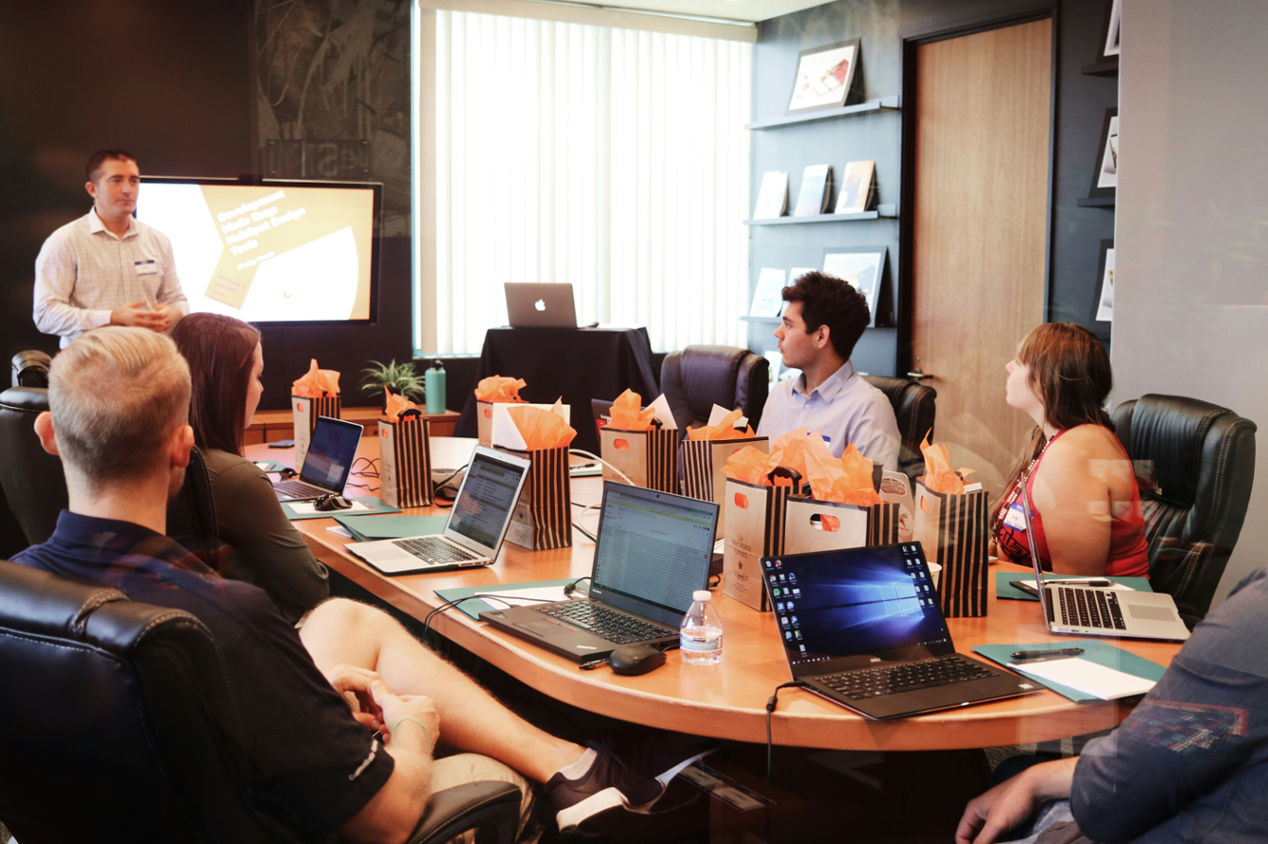 Security Updates
Security UpdatesThe Power of the Human Firewall: Your First Line of Defense
Discover the critical role of the human firewall in cybersecurity, combining employee vigilance with technology to protect against cyber threats ef...
 Security Updates
Security UpdatesStateful Firewall vs. Stateless Firewalls: What's the Difference?
Learn the key differences between stateful and stateless firewalls and how they protect your network. Discover the right choice for your security n...
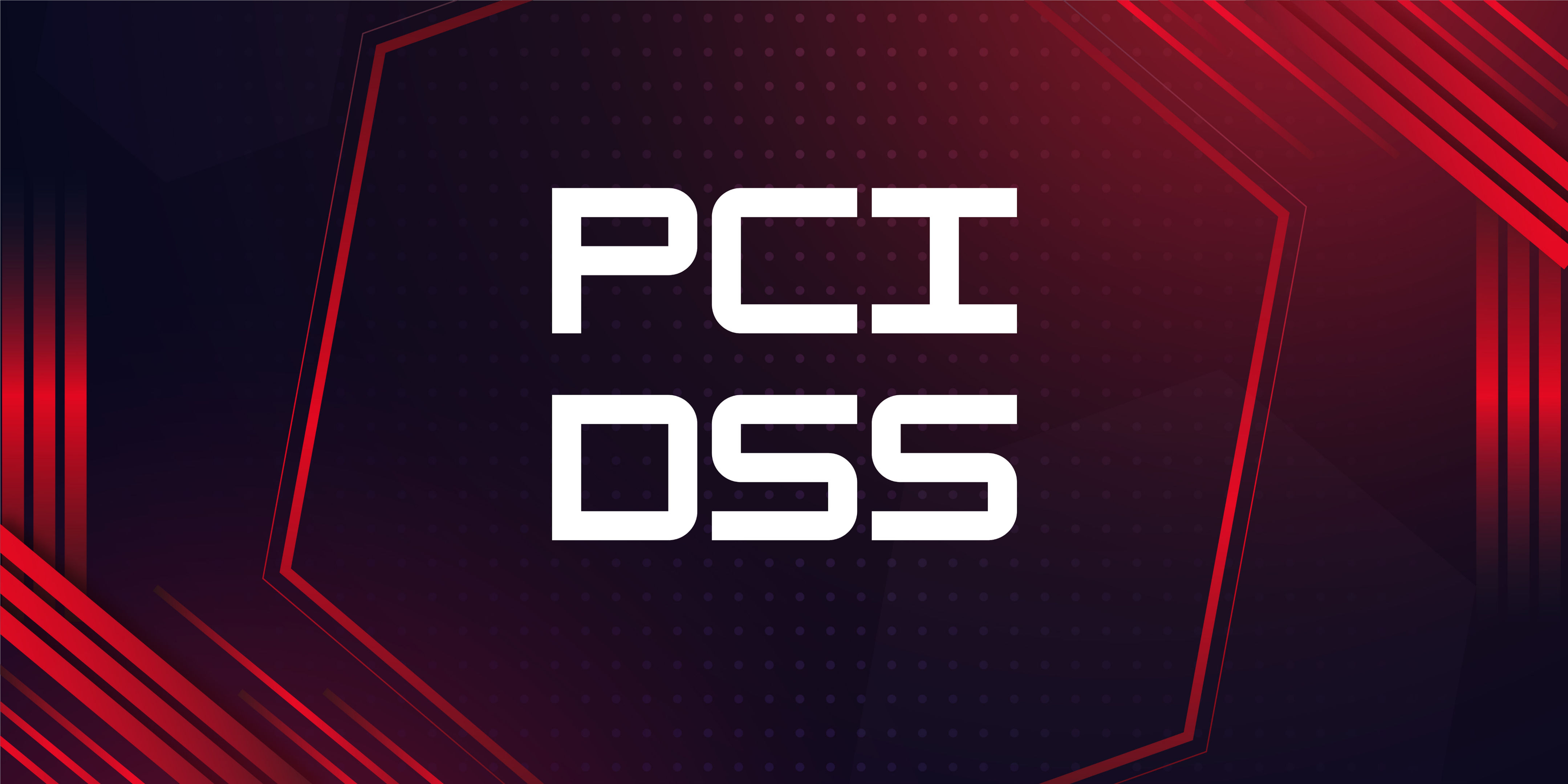 Security Updates
Security UpdatesUnderstanding the 4 Levels of PCI Compliance
Explore PCI DSS Compliance with RedZone: Key steps to protect card data and ensure secure transactions. Learn about compliance levels and tips for ...
 Security Updates
Security UpdatesWhat Is a Security Breach and How to Prevent Them
Learn how to effectively guard your business against security breaches with RedZone Technologies. Discover simple steps to keep your data safe and ...
 Security Updates
Security UpdatesUnderstanding Tailgating in Cybersecurity
Understand tailgating attacks in cybersecurity: what they are, how they work, and effective strategies for prevention to keep your business...
 Security Updates
Security UpdatesWhat is a Managed Service Provider and Its Benefits
Explore the role of Managed Service Providers (MSPs) in enhancing IT efficiency and cybersecurity for businesses, covering benefits, servi...
 Security Updates
Security UpdatesBreach Prevention: 5 Best Practices to Protect Your Data
Learn about data breaches: what they are, their impact, and how to prevent them. Explore best practices for securing your business against cyber th...






